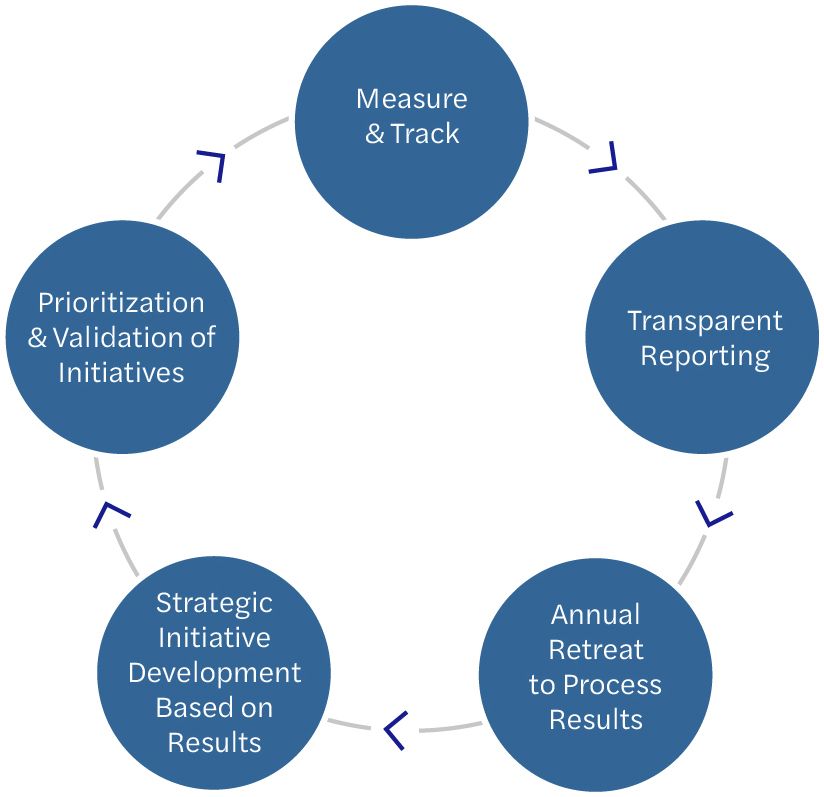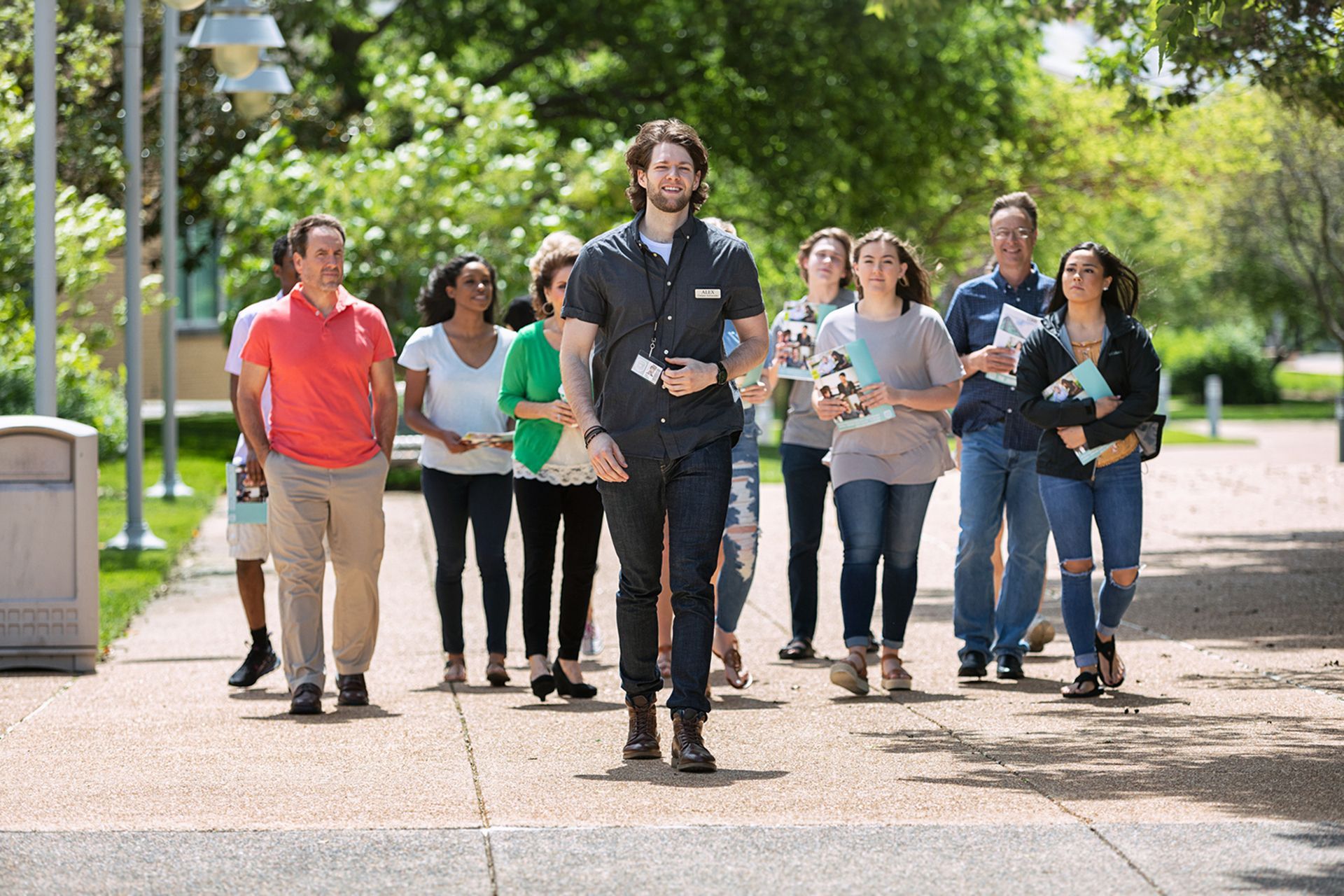Strategic Academic Planning: Wrap People & Process Around Your Data
Explore how to engage people and develop processes for your Strategic Academic Plan.
In the first two articles in this series, we introduced Strategic Academic Planning and provided suggestions for sources and uses of data that would speak to the past, present, and future of each of your academic programs. Here, we will turn to another critical piece of the puzzle—leveraging your faculty, staff, and other stakeholders in developing your Strategic Academic Plan.
We suggest that the Strategic Academic Planning process be cyclical, regular, championed by leadership, and include members of your faculty, staff, and alumni constituencies. There are multiple ways to conceptualize such a process, and we include one example below. In addition to regular data capture and transparent reporting, a successful planning cycle must provide space and time to internalize and discuss results. Here, we envision a summer retreat, but it could also be weekly meetings led by a strong facilitator.
Sample Strategic Academic Planning Cycle

In addition, make sure the planning cycle leverages a cross-functional team. We have worked extensively with colleges and universities to understand their programs’ performances better, and we routinely find that those institutions that leave this work to one unit wind up with a lot of good data that sit on the shelf. Because constituent groups often have different motivations for completing a program review, they may collect and attend to different data. To get a more complete data set, the process should involve representatives from academic leadership and the faculty, finance, enrollment management, and student affairs at a minimum.
Finally, it is imperative to establish a process that is sustainable and indefinite (and likely on an annual basis). In other words, avoid the ad-hoc approach. To do that successfully, you’ll need clear policies to hold you and your team accountable. Will there be a standing committee responsible for the annual planning cycle? Will its members be elected, and from what constituencies? How long will the terms be? What policies will the committee follow? Who will write and approve those policies? How will the president and other cabinet members contribute to the plan? The answers to these questions will differ for every institution, just as the goals and data driving the process will differ.
We have spent significant time with institutions conducting program reviews in one form or another. Therefore, we want to conclude this series, as we do in many of our speaking engagements, with some “tips from the field”:
Tips From the Field
- Know your goals and communicate them. It is essential that your teams understand how the academic planning process and its outcomes serve the long-term vision for the institution.
- Before asking your teams to dive headfirst into a ton of new data, make sure they understand why! We recommend starting with some financial literacy training. Help your people internalize the higher education business model, know the big drivers of revenue and expense, the impact of regulations, and how your endowment works. Incomplete or missing information can compromise the whole process.
- Find reliable tools to help with transparent reporting.
- Consider hiring an outside facilitator for this process. This person is not there to make decisions about your academic operation. A good facilitator is there to keep everyone rowing in the same direction, to keep the conversation on target, and to provide insights from across the industry.
- Don’t be afraid to revisit earlier decisions. A program that sounded good two years ago may no longer be feasible because of some disruptive event or technology impacting the industry. That’s okay. If you have a strong academic planning process in place, lean into it, and these issues should resolve themselves.
This article is adapted from our partner, Forvis Mazars, an integrated public accounting firm with diverse teams and locations worldwide. Rooted in unrivaled relationships based on integrity and forward thinking, their unmatched client experience can help you achieve your next level of excellence.











